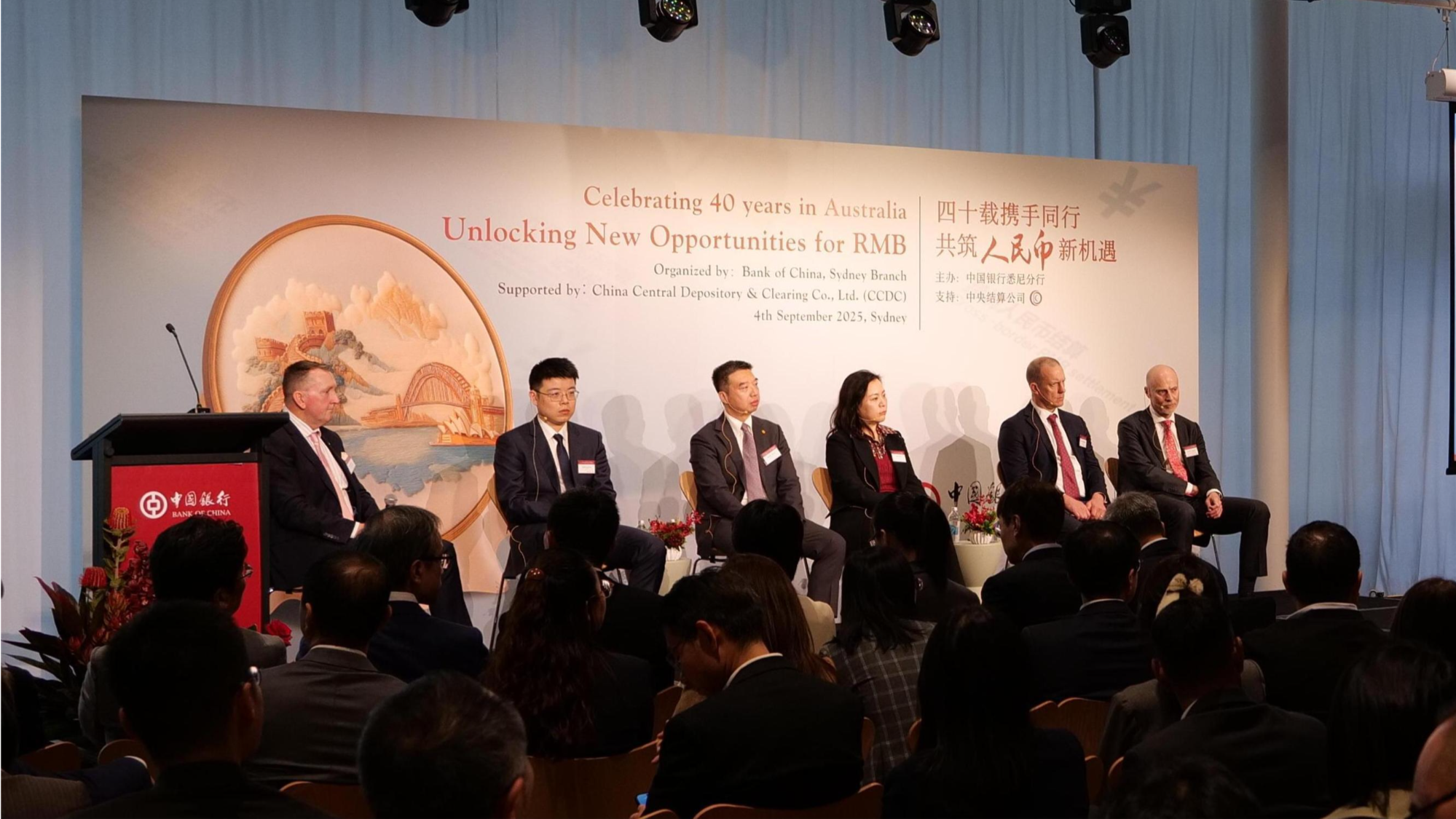
The renminbi’s internationalization is creating new opportunities for the financial sector in Australia, as trade settlements, investments and other transactions in the Chinese currency grow amid expanding China-Australia business links, experts said.
At an event in Sydney on Sept 4, participants from the financial industry and business sectors said they expect the renminbi (RMB) to gain a bigger role in Australia in the coming years, as Chinese authorities push the currency’s internationalization as part of further financial opening-up.
The Bank of China (BOC) has made significant progress this year in supporting Chinese enterprises in Australia to go global and advancing the internationalization of the renminbi (RMB), said Li Mang, general manager of the lender’s Sydney branch.
READ MORE: Yuan more popular in iron ore trade
“These efforts have not only strongly facilitated the implementation of major China-Australia cooperation projects, but also helped Chinese enterprises effectively manage exchange rate risks and transaction costs, while at the same time providing stable and reliable financial support for Australian local businesses to deepen cooperation with China,” Li said.
Li was speaking at a business gathering focusing on new opportunities presented by the RMB as BOC’s Sydney branch marked four decades of operations in Australia.
As the Chinese bank with the longest operating history in Australia and the only RMB clearing bank in the South Pacific region, Li said the Sydney branch will “continue to serve as a financial bridge, promoting high-quality financial cooperation to help Chinese and Australian enterprises achieve sustainable development”.
More than 100 representatives from the Australian and Chinese financial and business communities attended the event, which was hosted by the BOC’s Sydney branch and supported by China Central Depository and Clearing Co Ltd (CCDC), a central financial enterprise funded and established by China’s State Council, and functioning as the central securities depository, securities settlement system, and trade repository for the bond market.

CCDC positions itself as a key gateway for the opening-up of China’s bond market, serving major overseas investor institutions including central banks and sovereign wealth funds.
Wang Chunsheng, acting consul-general of the Chinese Consulate General in Sydney, highlighted the steady progress of the Chinese currency.
“In recent years, the RMB’s internationalization has advanced steadily, with wider use in cross-border trade and stronger global influence,” Wang said.
He emphasized the strong complementarity between the Chinese and Australian economies, covering energy, agriculture, green development, and innovation.
Liang Heng, chief business officer at CCDC, said China and Australia have strong cooperation in trade and finance, with collaboration in areas such as infrastructure development and sustainable financing expanding in recent years.
“We are pleased to see more and more Australian financial institutions actively participating in RMB clearing, settlement, and investment. This has injected vitality into regional development and advanced RMB internationalization,” he said.
James McIntosh, country head for institutional equity broker and corporate advisory group CLSA Australia, said significant growth areas include RMB settlement in major sectors like resources.
“A big part of the growth we see coming in that space is around RMB-denominated futures contracts because they provide the necessary financial instruments for both Chinese and Australian enterprises to manage price risks in the same currency settlement,” he said.
READ MORE: Experts downplay risk to RMB stability
While the US dollar remains the dominant settlement currency, the adoption of the RMB in commodity trading is a big driver of the internationalization of the Chinese currency, McIntosh said.
Shifting to the RMB “would require bilateral agreement with Chinese buyers and a fundamental shift in how global commodity markets operate”, said Wei Li, senior lecturer in international business at the University of Sydney Business School, whose research includes RMB internationalization and the globalization of Chinese enterprises and economy.
Li told China Daily that while there is growth in RMB use in sectors where China leads supply chains, such as electric vehicles (EVs) and machineries, Australian businesses still need to strengthen their capability to understand China’s institutions and regulatory framework in order to reduce costs and increase efficiency.
Contact the writers at xinxin@chinadaily.com.cn


